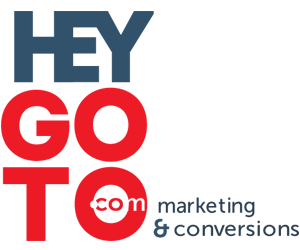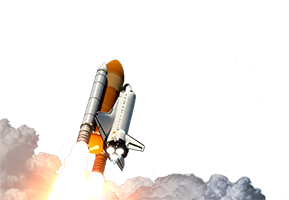Most people like to watch online video. Some business owner remain doubtful about the profit of incorporating online video into…
How Social Media Can Make Us More Productive
To quote Eric Clapton: “It’s in the way that you use it!”
In the constant back-and-forth arguments about Millennials joining the workforce, we’ve heard countless times that managers think social media is a distraction and ultimately a productivity killer in the workplace.
In response, the social media community has fought back by saying that these tools actually help them get things done faster, or bring other value to the business. But there have been few substantive conversations about precisely how social media might help you get things done.
Beyond Millennials, the “new workforce” is being defined by a work style that blurs personal and professional time. That development has spawned professionals that craftily use social media to get things done. Yes, the initial draw was networking, but as those relationships become more essential to your professional responsibilities, social media becomes an area where you can get a lot of work done too.
The trick is to realize that it’s not about the tool itself, but your ability to step back and analyze the tool’s real value in helping you accomplish tasks. If you’re not evaluating the way that you’re using social media to get things done, then you’re probably becoming increasingly inefficient because of it.
Without further ado, here are a few areas where social media can make you a productivity rock star, if you use it well.
Scalable Networking
Ten years ago, “networking” was done in restaurants, bars, on the phone and at conferences. Today the majority of networking occurs online, in tweets, e-mails, LinkedIn invites, and more. To put it bluntly, the difference between networking in 1995 and networking today, is about two hours less face time.
For instance, you can initiate a relationship with a mere tweet on Twitter or a comment on a blog post that shares an opinion or compliments someone. The tweet or comment only takes a matter of seconds, and you’re off and running with the start of a new relationship. The other party will remember you, and is beginning to value your opinions.
There is a lot of time saved when networking is done online, and the process scales rapidly with today’s tools. You can meet hundreds and thousands of people online, forge relationships in a matter of minutes, and maintain them long-term with much less effort.
Actionable Information is More Valuable
Information overload isn’t a new problem, and some folks would argue that Twitter and other tools have only made information overload more of a problem. But the truth is that if you carefully use tools like Twitter, Yahoo Pipes, RSS readers, Google Alerts and bookmarking to discover content that’s pertinent to your job, you can become extraordinarily efficient in finding, consuming and cataloging an enormous amount of information in a very short period of time. The key to staying productive is to distinguish your personal time spent with social media from your professional use of it.
Think about financial advisers reviewing stock information, market trends and news on important companies. Imagine their advantage if they were to systematize their information discovery through social media and better leverage communities like StockTwits. They would find content that is recommended by trusted friends and professionals in real-time, rather than relying solely on proprietary finance software and what surfaces on Google.
And it’s not just about finding the information; it’s about finding actionable information. Google alone doesn’t always reveal actionable information — only relevant links. But real people participating in social media surface incredible amounts of actionable information, with limited barriers to acting upon it quickly.
The recent phantom crash on Wall Street was initiated by a series of minor errors in a matter of seconds. Trades were happening in milliseconds, but news coverage scrambled to catch up to what was going on. Imagine if your adviser was tapped into real-time feeds to stay ahead of the game.
The application of this concept is obvious for any employee in the services world. Knowledge is everything, and social media used properly, is a tool to find, consume and act upon the most relevant, reliable information on the web in real-time.
Social Data Means Collaborative Freedom
One of the challenging things about collaboration is that while in theory it’s a huge productivity booster, it’s equally as likely to be a productivity killer when abused. Collaboration is also closely associated to the tools and applications built to support it. So if you’re collaborating with a group, and some people don’t like or simply can’t get the hang of a tool, then it’s a huge problem.
That being said, the beauty of modern social media and embedded social functionality in applications is that they are built for easy data portability — the message doesn’t always have to be tied to the medium. Twitter and Facebook feeds can be dumped into an entirely different application that’s more suited for your personal taste and work flow.
Twitter and Yammer clients might be the very best example of this. Anyone can use the service without having to live with an application that doesn’t suit their tastes and needs. In another sense, FriendFeed was quite successful at tying together almost infinite services and displaying them in one easy to use location.
In a world where collaboration is most often supported by some type of software, social media can provide the functionality to make sure that everyone can be productive while using the tool that works best for them.
It’s Not What You Use, but How You Use It
As with any tool, there are benefits and there are drawbacks. But the question isn’t about the tool. It’s about you.
Map out the various social media apps and tools that you use in your daily work life and rank them in order of importance to you. If you could only keep one of them, which would it be and why? Ask yourself which tool helps you accomplish the widest variety of tasks on a regular basis. Is that the same tool as the one you couldn’t live without?
I’m willing to bet that after doing this, most people would find that their “can’t live without” tool is not necessarily a tool that helps them accomplish the widest variety of tasks, but it’s incredibly important to their single, top-priority task.
Social media has more potential distractions than your inbox, and that can become a huge problem if you’re not taking a step back to analyze and optimize your social media work flow to be productive.
Take the time to see the forest for the trees, analyze how you’re using these tools, and make the most of it. Social media can be a double-edged sword, and it’s up to the user to determine how it all plays out.
Contact HeyGoTo at (702) 475-4227 or go to www.HeyGoTo.com today to find out how we can help you! To read more industry information go to the HeyGoTo Blog at http://heygoto.com/wordpress/
Latest posts by David Moceri (see all)
- - August 12, 2023
- Internet Marketing – The Art of Capturing Market Share - May 20, 2017
- Top 3 Social Media Mistakes Online Marketers Need to Avoid - December 31, 2016
This post was written by David Moceri

